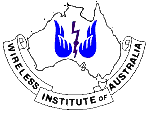Western Australian Division
Our Members are Important People, without you, Our Organisation has No Purpose
 |
At the beginning of the 20th century
most people
involved in radio experimentation could
be
classed as "amateurs".
These were people who had an interest in
the
exploration of radio.
Much had to be learnt and many
experimented
with the new technology.
Commercial and government interest in
radio
began to become part of the world of radio investigation,
and a more defined separation between
the
amateur experimenter
and the commercial and government
involvement
began.
From those early days of
experimentation,
amateur
interest in radio became a licensed hobby,
requiring the passing of an examination
to
allow
transmission onto the radio frequency spectrum.
International agreements had to be set
up
between countries
to allow amateur radio to function, as
radio waves
cross borders and continents.
Today Amateur radio is a hobby that
is enjoyed
by over a million people throughout the world.
It is an interest in radio
communications
at a hobby level
that involves setting up a radio station
to communicate with other Radio Amateurs
near
and far.
The setting up of an Amateur Radio
station
can be relatively simply to very complex.
It can involve all aspects of such a
station,
including the transmitting and receiving equipment,
to the mast and antennas needed for
communications.
Amateur radio has people from all
different
age groups and work situations.
Both sexes participate in the hobby, but
the
majority are male.
There are many aspects to amateur
radio
and
most amateurs find it impossible to participate in all.
Usually a particular activity of amateur
radio
becomes the main interest in the hobby
and this is where an individual spends
most
of their hobby time.
Areas of amateur radio activity
| |
|
| |
|
| |
|
| |
|
| |
|
| |
|
For the first 50 or so years of
amateur radio
in Australia
there was only one grade of license.
In order to become a radio amateur an
examination
in
electronic and radio theory; regulations
and
Morse code had to be passed.
This changed in the 1950's with the
introduction
of the "Z" call.
This license required only the theory
and
regulations, with no Morse code.
This grade of license restricted
operation
to 50 MHz and above.
Since then there has been a number of grades of license. These are:
Full
call / Unrestricted with all
privileges
Required Morse Code
at
10 words per minute
since
2000 this has been changed
for
full privileges it only
requires
5 words per minute Morse
Code
plus Full Theory and Regulations
Call sign suffixes from VK*AA to
VK*ZZ and
VK*AAA to VK*GZZ
(IAA-IZZ - SAA-SZZ - WAA-WZZ are also
Full
call/Unrestricted)
The above
list must include
the old
Combind/Intermediate Licence
or "K call" VK*JAA - VK*KZZ
(Note GGA-GGZ and GHA-GHZ are
allocated to
the Girl Guides Association
and many calls between SAA - SZZ are allocated
to the Scout Association)
IYA-IYZ are allocated to the
International
Year of !!!
OTN is allocated to the Radio Amateur
Old
Timers Club
RAA-RZZ are allocated
to Repeaters and Beacons
RAN and SEA are allocated to the Royal
Naval
Amateur Radio Society
WIA-WIZ are allocated to the WIA
To gain Full privileges the following licence holders need to pass
Limited Licence
- Need to
pass 5 wpm Morse Code
Novice Licence
- Need to pass Full Theory
Novice Limited Licence
- Need to
pass Full Theory and 5 wpm Morse Code
Note: 17th November 2003
Morse Code will cease to be
an examinable subject on the 1st January 2004.
Limited Licence and
Novice-Limited Licence will
be permitted to operate on
amateur HF bands.
Limited licensees will be
able to operate on all amateur bands,
Novice-Limited gain
the Novice segments on 80, 15 and 10,
changes will take
effect on 1 January next year 2004.
![]()
To
be continued - see AR Guide WA
![]()

Whats

What is AR
Amateurs Unite and Conquer, United we stand, Divided we fall.
Designed for 800x600 - This page Updated 24th November 2003
WIA WA Post Office Box 10, West Perth, Western Australia, 6872. Email: [email protected] http://www.wia.org.au/vk6
| Please send any Broken links / Correction s / Suggestions to [email protected] |
VK6WIA
